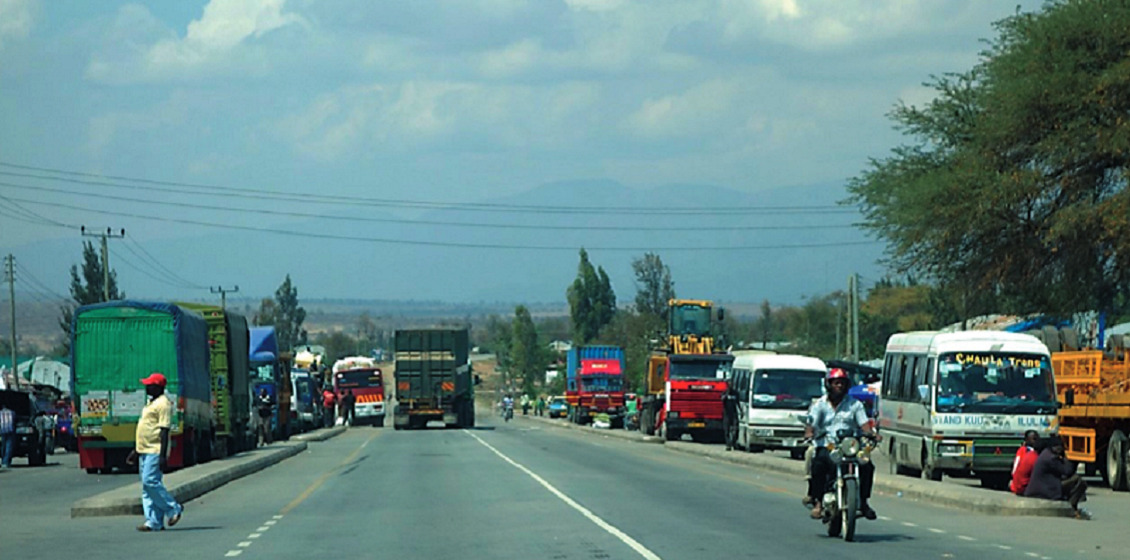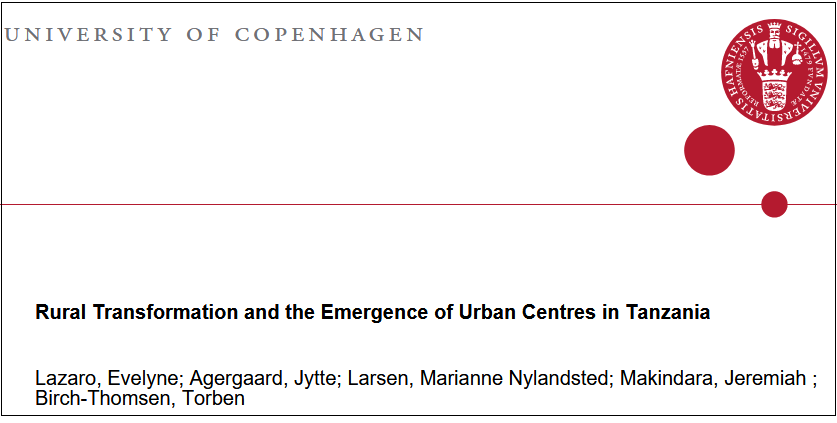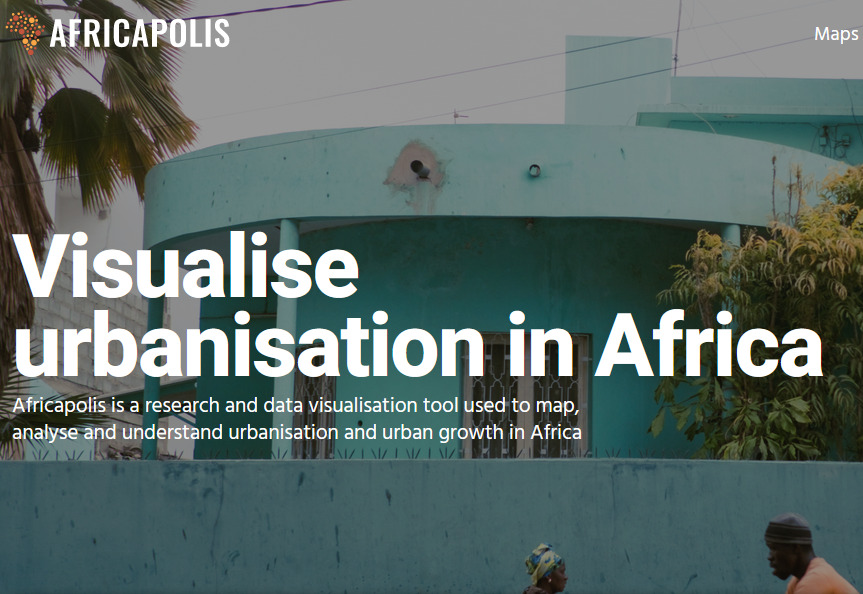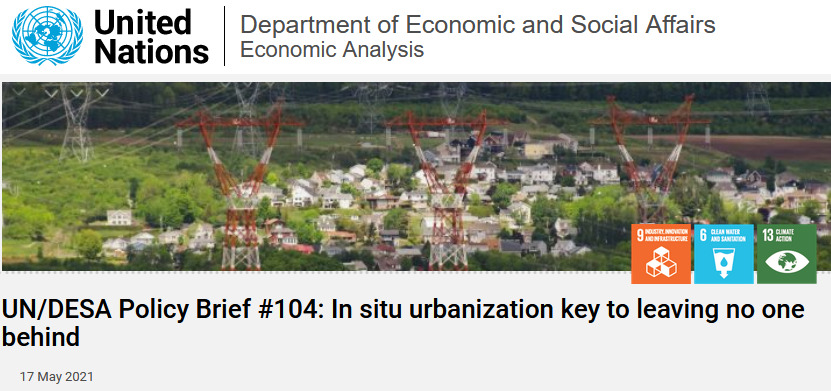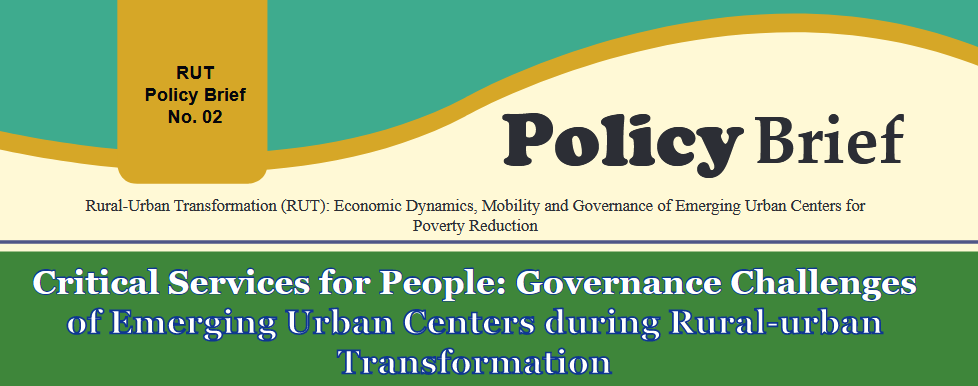Urbanism as a concept often brings to mind ideas of large metropolitan centres that are densely populated, not only with people but also buildings, expansive infrastructure, as well as opportunities. The idea of rurality poses a stark contrast to this image, evoking large swathes of agricultural land, a quieter, slower pace of living, and so on. However, the reality on the ground is not so clear cut. Urban spaces are scattered throughout different global regions, not necessarily acting as a bridge between big cities and rural areas, but existing as their own dynamic centres. Jytte Agergaard sits down with me to talk more about these places, which her research labels as emerging urban centres (EUCs).
Alternatives to ‘classic’ urbanisation processes
Jytte Agergaard, professor at the Department of Geosciences and Natural Resource Management at the University of Copenhagen, has an extensive range of research interests and expertise. She has investigated topics such as internal migration, agrarian change, and now, more recently, urbanisation processes in metropolitan areas as well as smaller urban centres across different continents. This is an important distinction to make – her focus is not, like many urban researchers, on big cities: “I’m not so much in the city as I’m interested in what is actually happening in the transformation from rural to urban, which we observe in many places in the world”.
Most recently, she was engaged in a DANIDA funded project called Rural to Urban Transformations (RUT) exploring urbanisation processes in Tanzania. More specifically, the project focused on the emergence of small urban centres which is “a very different process” compared to what is traditionally understood as urbanisation, simply “because there’s no city around”. This type of process could also be labelled “in situ urbanisation”, e.g., urbanisation that emerges as rural areas develop urban characteristics and strengthen their economic linkages to surrounding towns, villages, and cities. Put simply, ‘the urban’ in her research diverges from traditional notions of ‘the city’.
Colleagues have similarly explored this phenomenon through aerial observations, finding that these small agglomerations, EUCs, have been on a high increase in Africa in the past decades. Despite such a trend existing, Jytte explains that “this kind of urbanisation has a much poorer press, you could say, because it seems so natural – ‘it just happens’. And often, we don’t really observe how [it happens]. And many of these locations are still registered as villages even though they might have 20 to 30,000 inhabitants, which we would think about as clearly being a town”.
This puts into evidence the importance of research on these urbanisation processes. Jytte elaborates, “part of my research, and what I do with international colleagues, is mainly asking, how can we come to understand this type of in situ urbanisation? Whether in a rural region, or sometimes along highways – it has many sorts of spatial manifestations – and we are looking into how that fits into our vision about urbanisation in Africa, the need for governance, the need for climate adaptation…”
So, what makes a place ‘urban’?
Understanding the urban outside of the city brings to mind the question – what exactly constitutes ‘urbanism’? Jytte explains that it is a constellation of factors that define a space’s transformation from rural to urban. For one, “you can start by looking at peoples’ sources of income. In these areas, people’s livelihoods may only partly be based on rural or agriculture-based income. People diversify their income and their livelihoods include urban spending and investments in urban land. So, people are moving away from investing in a farming society”.
She further adds; “another way to look at it is when certain kinds of services appear. In such emerging centres there’s a lot of employment in services, from small marketing companies to schools, to small grocery stores. For example, in one [of the places we researched] we saw a huge increase of what you could call ‘box shops’. Where one person sells plastic from China, and in the next box you sell school books, and another one sells soap and oil and so on. And also, you find a lot of small guest houses, even hotels sometimes. So, in this way, these areas become urban centres, servicing a rural economy but also very much supporting residential areas”.
The social fabric is also an important aspect of what ‘makes’ a place urban. For example, the dynamics of EUCs attract many young people, who move to these areas in search of new livelihood opportunities. Jytte further explains that a lot of ‘independent women’, those who are divorced and/or left by their husbands, also move to EUCs as they offer a setting where they can live autonomously without facing much stigma for their situation. These spaces also become hubs for people from larger cities that invest their surplus in emerging urban centres – before or as part of returning to these places. This is particularly driven by the high living costs in larger cities that compromise their quality of life.
Finally, urbanism takes on material dimensions as well: “you see a lot of concrete as well – you can look into the house styles. There’s not much difference between the house styles in those small urban centres and the ones you find in the outskirts of Dar es Salaam, for example. So, it’s a similar kind of way of producing a certain form of urbanism”.
Jytte goes on to add: “But, it’s not to say that rurality and farming are ‘out’ or are unimportant, because these can still be important backbones of the economy and way of living. But we might also see the development of a service economy, and a kind of remittance economy… These kinds of rural-urban interactions or connections emerge”.
Drivers for in-situ urbanisation
As Jytte previously mentioned, this rural to urban transformation is often seen as a natural progression – not much question is given to what actually drives it to happen. According to Jytte, systemic drivers included the increase in infrastructural investments within the region in the 90s and onwards supported by e.g., the World Bank and the African Development Bank, which then facilitated the mobility of people and allowed for the emergence of new interconnections between places. Also, structural adjustment policies in the 90s contributed to changes in small-scale farming and the rural economy that “supported a new kind of production boom. And the other part of it is, of course, also an access to the global market”, explains Jytte. These factors allowed people to make new investments in goods and services, supporting farming, education, and eventually leading to the gradual development of such urban spaces.
The push for education in the MDGs is further highlighted as an important underlying force: “I think we tend to underestimate how much ‘free education for all’ is actually a driver for urbanisation. If you start to think about a whole generation that needs to be educated, then you’re also starting to move people’s ideas away from being a farmer. And so first you go for primary education in the nearest village or town. Then, for secondary, you go to the next”. In consequence, more families invest in education and people end up moving between places, ultimately orienting themselves towards urban living.
Nowadays, as Jytte explains, this urbanisation is more “bottom up”, driven by waves of returning migrants and “reinvestments from larger urban areas”. Again, EUCs stand out as an attractive option to people, not simply because they might be cheaper than larger cities but also because they offer “new options and possibilities”.
Caught ‘in-between’ – challenges to urban governance
Despite the positive aspects mentioned, the dual status that these centres may possess – whether in being classified as rural with urban characteristics, or vice versa – often lends to confusing governance structures that complicate the distribution of state resources and top down organisational approaches. Jytte elucidates that when she first began conducting fieldwork in one of the EUCs, “it was such a kind of detective work to find out how it was organised”.
This detective work continued elsewhere, as Jytte explains: “These emerging urban centres, they’re actually large villages. So, they have a kind of village governance, but they are announced as townships… It’s really complicated because the state might say ‘okay, this place is growing now so we announce it as a township.’ But then they say, ‘you cannot become a township unless you have good roads and before you have water’. But the funds for doing that are only applicable if you are a town. So, they are caught in-between. There’s poor governance systems and inappropriate transfers of power and resources in these in-between places”.
Indeed, the categorization and re-categorization of growing urban centres is a complex process, with no clear, straightforward path. Yet, it is important – Jytte stresses “all these demarcations have a lot of politics and economics attached to them”, determining who gets access to which resources and so on; factors which affect the livelihoods of their residents and the general well-being a space provides. Indeed, navigating different categorisations poses a challenge to citizens, as it generates a lot of confusion regarding leadership, responsibilities, and resources. But, despite this, there have also been counter ‘bottom up’ organisational structures emerging. One example of this is seen in the role that churches play in many of the spaces Jytte has researched, where they not only act as social settings that bring together people coming from different places, but also as organisational spaces where different village needs are discussed and negotiated.
The challenges to governance once again bring to light the importance of recognizing these spaces as existing in their own unique ways, as opposed to always sticking to the rural and urban binary. As Jytte argues, “it is important to think about these transitional spaces as their own… Because it’s a way of also trying to say, how can we make governance for these transitional spaces? Instead of speaking about how to transform rural governance into urban governance”.
Institutional biases: which projects get funding?
EUCs evidently face different struggles, and research-based projects to support them could help facilitate many of these challenges. However, they are not always recognised, or at least not prioritised, by large international organisations that can provide the necessary funds to do so.
Jytte explains that with the sustainable development goals, sustainable urbanisation gained heavier importance within global institutional structures that delegate funding for research and project implementation across the world. She goes on to explain that “in parallel with that, there was a renewal into asking how should we look into urban development? And through that, there [emerged] a strong track looking into rural-urban interactions and the emergence of smaller towns.”
Nonetheless, interest in smaller urban areas has its limits. According to Jytte, this occurs because “there’s been this narrative for so long that what Africa was experiencing was urbanisation without growth, meaning urbanisation without industrialization. And if there’s one thing that’s for sure, many African societies have experienced economic growth so Africa’s urbanisation is not unrelated to growth: but the processes are very different from the ones that Asian societies, for example, have experienced.”
Certain organisations that get funding from larger institutions like the OECD do prioritise themes related to Jytte’s research regarding small-scale urbanism that focuses on local realities. The Sahel and West African Club (SWAC) for example, “has done research that just tries to ask, how do local traders trade? Instead of saying that these traders lack industrialization, they ask – what’s the trade? How does it happen? Who does what? What is the role of small centres? How can we understand this spatial economy?” For this, they have, supported by the World Bank, developed new ways to detect this diversity of urban trajectories across Africa, which can be further explored here: https://africapolis.org/en.
However, many big funding institutions, although being concerned with sustainable urbanisation, are not so interested in further exploring the reality of what is happening on the ground, the nuances of what goes on in different regions and countries within the continent. Jytte elaborates, saying that “there’s a big idea of – how can we get smart solutions? And so urbanism is on the radar but it’s very much directed to where we can find ‘smart’ ways of developing solutions. And what’s characteristic of all the places I’ve been talking about is that it’s so ‘messy’. It looks different in many ways. For example, there’s no easy water system that can be implemented somewhere and then replicated everywhere else. So, you have to deal with a mess, and there’s no easy solution for those”.
Once again, this elucidates the importance of research that is willing to dig deeper into complex realities, in order to better understand them, the needs of people living within them, and how they can grow meaningfully in their own ways. In Jytte’s words: “It is important to look at these places – but it needs a totally different engagement. And I can’t say how that should be done easily. But one way to start thinking about it is, of course, to realise its existence”.
Gabrielle Froes is a M.Sc. student, Global Development, University of Copenhagen, and a DDRN University Intern


